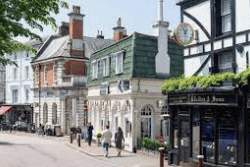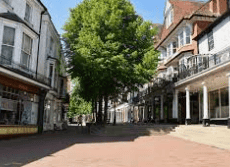Royal Tunbridge Wells is one of the many towns that did well out of its water. The Victorians placed a great store in drinking pure mineral water and the spring at the town was reckoned to be very restorative and open to many healing properties. One man can be attributed to its sudden rise in fortunes, the arch dandy Beau Nash. Nash was something of an early trend and fashion setter so when he decided that Tunbridge Wells was the place to be, the “in crowd” followed. This brought riches and status to the town which can be seen today in its high streets architecture. The most famous of these is the Pantiles, a perfect example of Georgian building and design. But this is just one of the many Local things to do in Tunbridge Wells. Check out www.localthingstodo.co.uk/locations/things-to-do-in-tunbridge-wells/ for more and lets get a brief look at the town’s history.
Due to its location near the High rocks hill range Iron has been a major part of the town’s existence. There is clear evidence that people had settled on the site and where mined the ore from the high rocks and the height of the hills certainly made an attractive place to site a castle and that’s exactly what the Iron age people did. The interest and availability of Iron was also of interest to the Romans and so they too made the most of this resource. Iron manufacture was an essential part of the town’s continued existence right up until the late 1800s. You can still see one of the mediaeval iron foundries in the grounds of Baynham Abbey nearby.
The town owes its Royal name to the honour of being visited by King Charles the first and his wife Henrietta Maria. During the years of the King’s Peace, prior to the English Civil war, everyone and anyone in the English aristocracy was desperate to curry favour with the King as he was the absolute ruler over the country, (having dissolved parliament because it wouldn’t give him any money). Charles was persuaded to come and try the waters of the town as he had heard of its healing properties from one of his father couriters. With this Royal seal of approval the town began to gain many rich visitors from nearby London keen to escape the City’s smell and try something that tasted nicer than the Thames.


